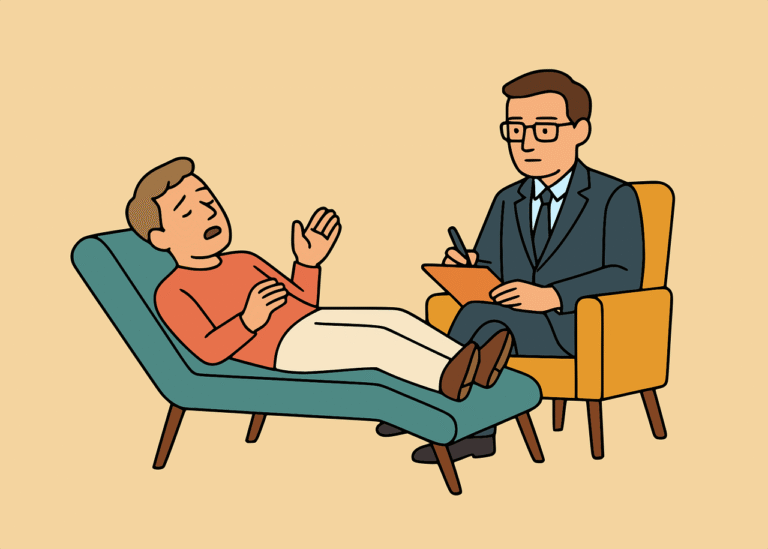Book Appointment Now
Top Therapy Techniques Offered by Kenyan Therapists
Therapy entails a lot more than just talking about your problems, it is basically a step-by-step journey toward emotional and psychological healing. In Kenya, mental health awareness has grown a lot thanks to numerous efforts by the government and non-governmental organizations, and more people are now seeking professional support to deal with mental or emotional issues.
To meet these diverse needs, therapists in Kenya and worldwide use a variety of therapy techniques to help their patients. Some of these methods, based on global research and others influenced by local culture, provide practical tools that help people cope and thrive. This article entails an in-depth description of the top therapy techniques offered by Kenyan therapists and how each approach is efficient.
Table of Contents
1. Cognitive Behavioural Therapy (CBT)
Cognitive Behavioural Therapy (CBT) is a structured and goal-oriented method that helps individuals recognize and change negative patterns of thinking and behaviours.
CBT treatment usually involves efforts to change thinking and behaviour patterns.
(What is Cognitive Behavioral Therapy, 2017)
It is efficient in treating issues like
- Depression.
- Anxiety.
- Phobias.
- Post-traumatic stress disorder (PTSD).
- Sleeping troubles.
- Eating disorders.
- Obsessive-compulsive disorder (OCD).
- Substance use disorders.
- Bipolar disorders.
- Schizophrenia.
- Sexual problems
(Cognitive Behavioral Therapy – Mayo Clinic, 2025)
Why it works:
It teaches people how to challenge harmful thoughts like “I’m not good enough” or “Nothing will ever change” and replace them with more helpful beliefs.
For Example:
A university student experiencing exam anxiety may be guided to notice thoughts like “I will fail no matter what.” Through CBT, the student learns to challenge that thought and replace it with a more balanced one, like “I’ve studied hard and will do my best.” This helps reduce anxiety and increase focus.
Or an employee has stagnated in the same job group for a few years, until they believe and start telling themselves that they will never grow in the career. CBT can help change that attitude for the better
2. Person-Centred Therapy (Rogerian Therapy)
This method, developed by Carl Rogers, and is based on the idea that everyone has the potential to growth and heal. The therapist using this technique creates a specialized, safe and supportive environment to the client to speak freely without fear of judgment. The focus is on active listening, empathy, and unconditional positive regard.
Example:
A young girl struggling with sexual abuse from close relative or family friend stress may open up in therapy. As the therapist listens with empathy and reflects her feelings, she begins to recognize her inner strength. Over time, she develops greater self-acceptance and emotional resilience.
3. Solution-Focused Brief Therapy (SFBT)
Solution-Focused Brief Therapy is a short-term, therapy focused on future results based on evidence that helps clients identify what’s working in their lives and build on those strengths. Rather than spending a lot of time discussing problems, it encourages people to set clear goals and find small steps to reach them.
(Lutz, 2015)
4. Narrative Therapy
Narrative Therapy views people as separate from their problems. It helps clients reframe their life stories and see themselves as strong, capable individuals rather than victims of their circumstances. This approach involves telling and retelling one’s personal story in a way that highlights hope, resilience, and positive identity.
Example:
A retired teacher who feels that he is not important after retirement may be encouraged to revisit his life journey. By reflecting on past achievements and contributions, the therapist helps him build a new story that values their wisdom, contributions, and experience, leading to renewed purpose to continue living.
5. Culturally Relevant Approaches
Many Kenyan therapists combine Western or global therapy techniques with local cultural practices. These might include involving family or community elders in therapy sessions, recognizing spiritual beliefs, or using language and metaphors that resonate with the client’s background.
These blended approaches respect the client’s cultural identity. They help remove the stigma often associated with therapy by showing that healing can happen in ways that feel familiar and respectful of tradition.
Example:
A client from a pastoralist community in northern Kenya may feel more comfortable if a respected elder is included in the healing process. The therapist facilitates this involvement, helping the client feel supported and understood in a culturally appropriate way.
6. Hypnotherapy
Then there’s hypnotherapy, which works with the unconscious part of your mind—the part that quietly runs your habits and behaviors in the background. It’s also the part that stores your past experiences, even the painful ones, and tries to protect you by creating patterns to keep you safe. But sometimes those patterns end up keeping you stuck. Hypnotherapy helps you talk to that deeper part of your mind, so you can gently let go of old fears and create new, healthier ways of living. For example, if you’re always afraid of dating because of a bad experience long ago, hypnotherapy can guide you back to that memory, not to relive it, but to finally understand it and make peace with it, so it no longer controls you.
Conclusion.
Therapy is not just for people in crisis, it’s for anyone who wants to live a more balanced, joyful life. Whether you’re managing stress, navigating relationships, or working through grief, there is a therapy technique in Kenya that can support you.
Book a session today to start the healing journey.
References
- Clinic, C. (2020, January 8). Cognitive behavioral therapy (CBT) is a structured, goal-oriented type of talk therapy. It can help manage mental health conditions and emotional concerns. Cleveland Clinic. https://my.clevelandclinic.org/health/treatments/21208-cognitive-behavioral-therapy-cbt
- Cognitive behavioral therapy – Mayo Clinic. (2025). Mayoclinic.org; https://www.mayoclinic.org/tests-procedures/cognitive-behavioral-therapy/about/pac-20384610
- Yao, L., & Kabir, R. (2023, February 9). Person-Centered Therapy (Rogerian Therapy). Nih.gov; StatPearls Publishing. https://www.ncbi.nlm.nih.gov/books/NBK589708/






